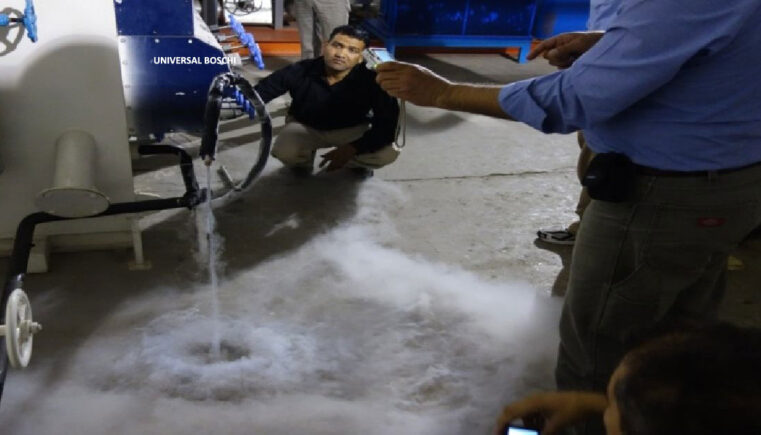
Nitrogen gas is commonly found element in the atmosphere accounting for around 78% of the atmosphere. It is established fact nitrogen is the largest industrial gas. The gas is used in wide range of industries including chemical oxidation, welding, melting, brazing, manufacturing batteries, glass industry, copper smelting, sewage treatment, fish farming, pulp and paper industry, etc. Industries and hospitals use nitrogen generators for producing nitrogen for industrial and medical applications. And, our generators are manufactured and fabricated employing the latest cryogenic technology.
Use of nitrogen in hospitals:-
Nitrogen has numerous medical applications especially in liquid form providing temperatures as low as -196°c. Hospitals employ medical nitrogen gas generators for meeting their nitrogen needs. It has got following medical applications:
- In preservation of blood, blood components, other cells, body fluids or tissue samples using cryogenic processes.
- For various for minor surgical procedures using cryosurgery in dermatology.
- It is used as a component in various gas mixtures.
- As a displacement medium for sterile equipment, a non-oxidizing displacement medium in pharmaceutical vials and as a propellant in pressurized aerosol dispensers.
- For getting pneumatic pressure nitrogen is used as source to power gas-operated medical devices.
- It is used for cooling carbon dioxide surgical lasers.
How nitrogen is produced?
Hospitals now prefer to use medical nitrogen generators for producing high purity nitrogen for use in hospitals and industries. Atmospheric air is directed into an oxygen plant which is then sent into the air separation unit where it is compressed and is moved into the cleanup system where impurities like moisture and carbon dioxide are eliminated. Then, the air is taken into the heat exchangers where it gets cooled to cryogenic temperatures. Subsequently, the process air is directed into the high pressure distillation column where nitrogen is separated from oxygen and other gases. Next, the air enters a high pressure distillation column where it is physically separated into a vaporous form of nitrogen at the top of the column. It is further distilled to meet medical and industrial specifications.

